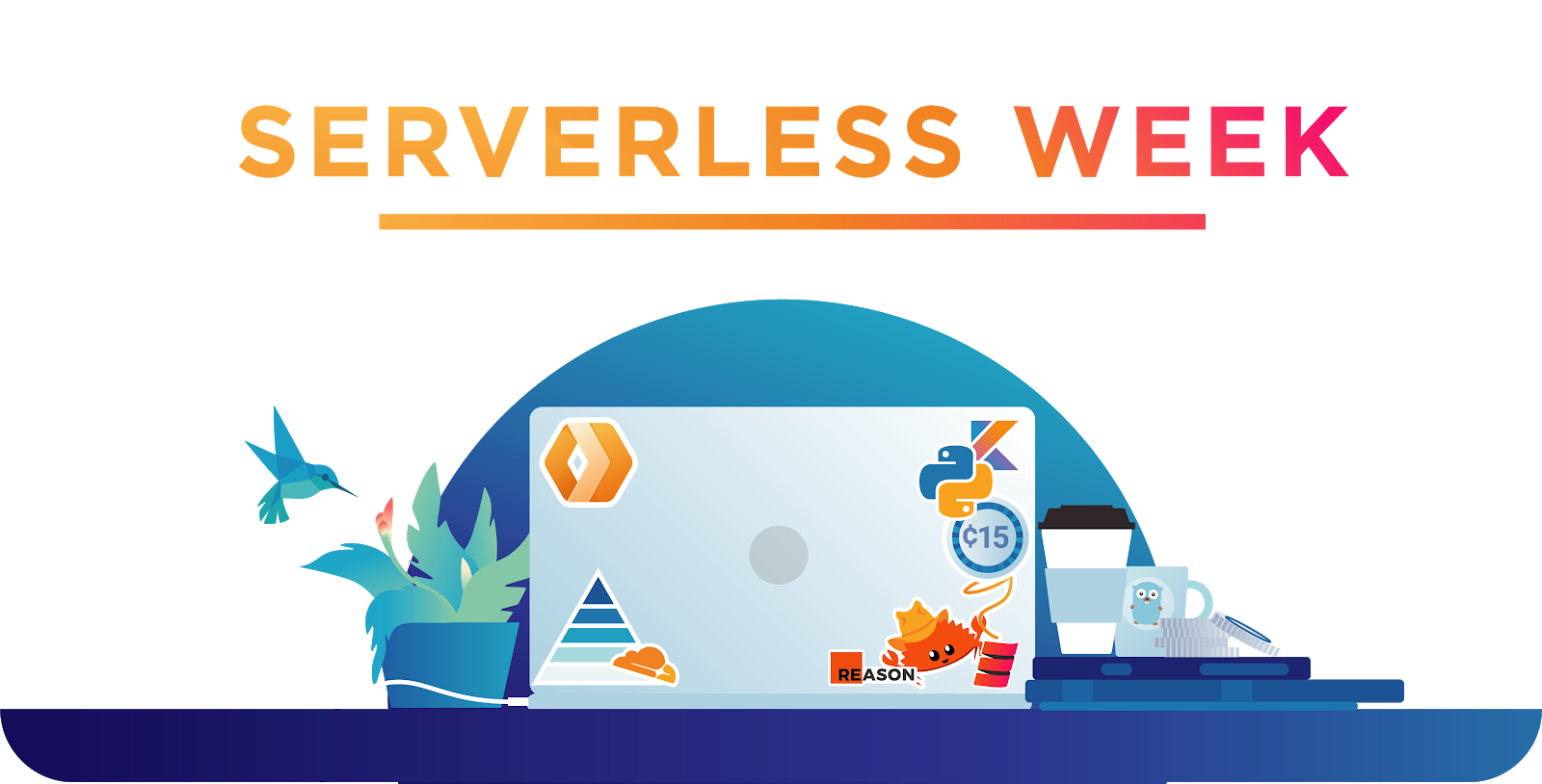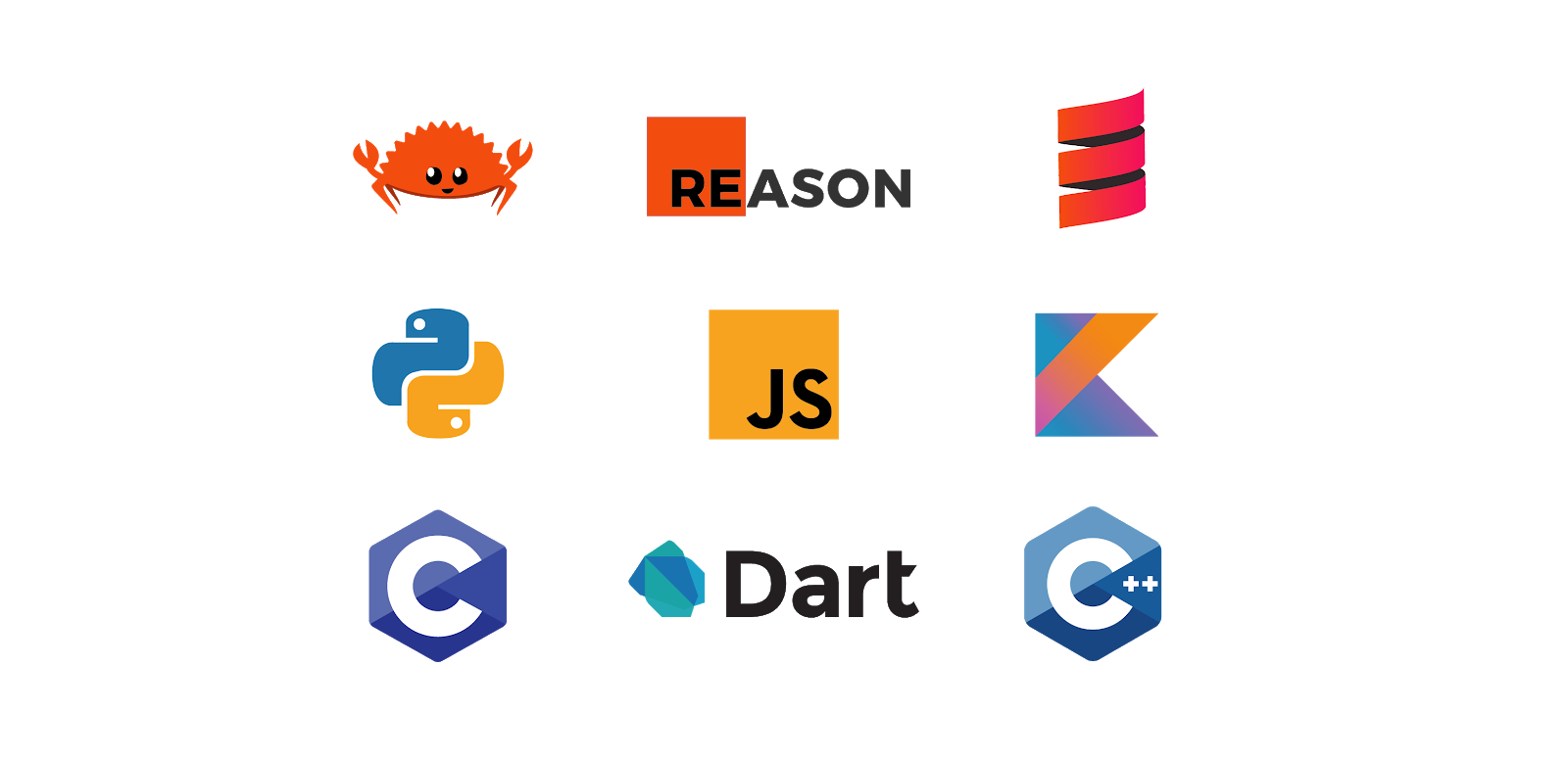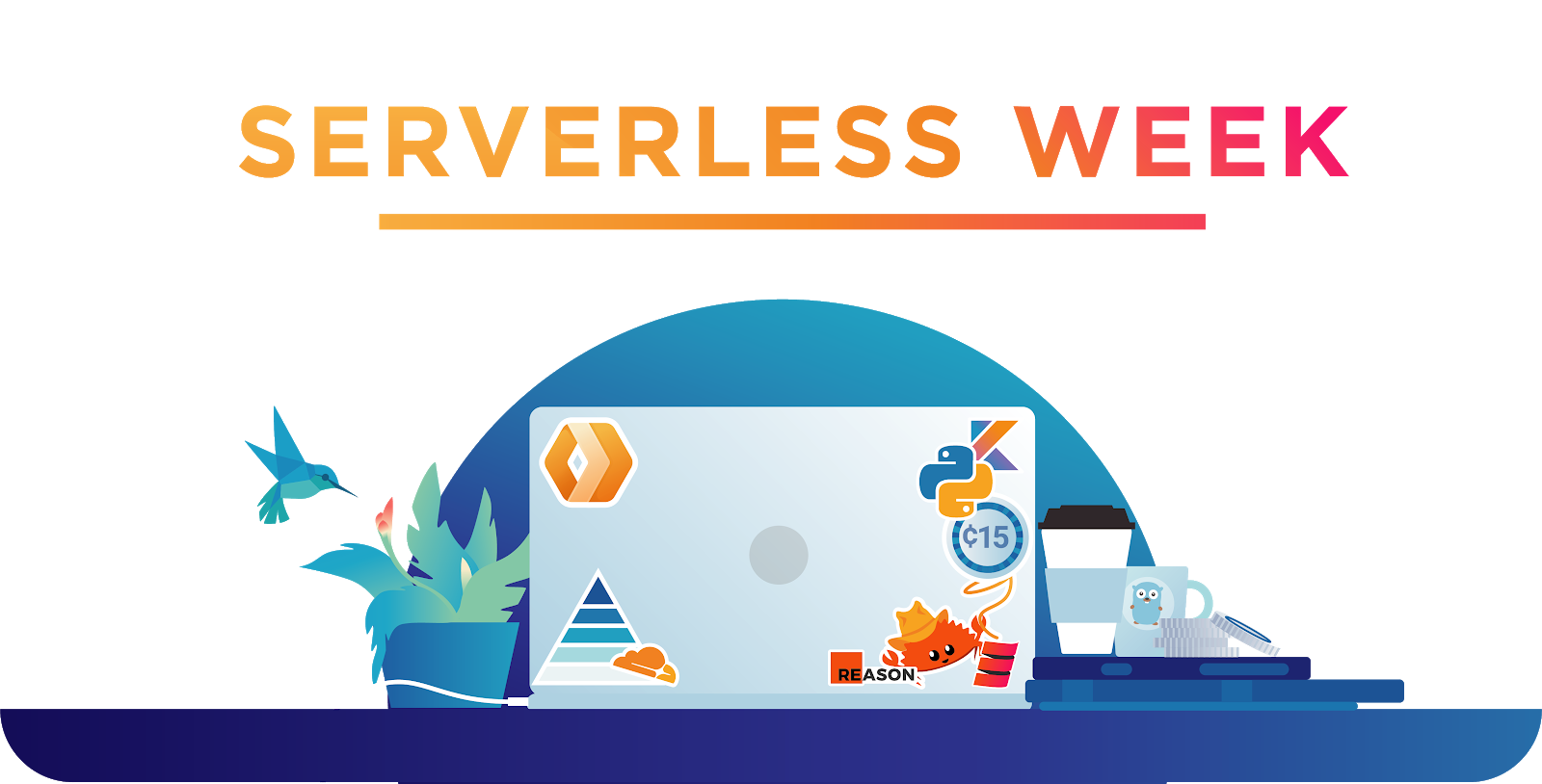Cloudflare Workers Announces Broad Language Support


We initially launched Cloudflare Workers with support for JavaScript and languages that compile to WebAssembly, such as Rust, C, and C++. Since then, Cloudflare and the community have improved the usability of Typescript on Workers. But we haven't talked much about the many other popular languages that compile to JavaScript. Today, we’re excited to announce support for Python, Scala, Kotlin, Reason and Dart.
You can build applications on Cloudflare Workers using your favorite language starting today.

Getting Started
Getting started is as simple as installing Wrangler, then running generate for the template for your chosen language: Python, Scala, Kotlin, Dart, or Reason. For Python, this looks like:
wrangler generate my-python-project https://github.com/cloudflare/python-worker-hello-world
Follow the installation instructions in the README inside the generated project directory, then run wrangler publish. You can see the output of your Worker at your workers.dev subdomain, e.g. https://my-python-project.cody.workers.dev/. You can sign up for a free Workers account if you don't have one yet.
That’s it. It is really easy to write in your favorite languages. But, this wouldn’t be a very compelling blog post if we left it at that. Now, I’ll shift the focus to Continue reading
The Migration of Legacy Applications to Workers


As Cloudflare Workers, and other Serverless platforms, continue to drive down costs while making it easier for developers to stand up globally scaled applications, the migration of legacy applications is becoming increasingly common. In this post, I want to show how easy it is to migrate such an application onto Workers. To demonstrate, I’m going to use a common migration scenario: moving a legacy application — on an old compute platform behind a VPN or in a private cloud — to a serverless compute platform behind zero-trust security.
Wait but why?
Before we dive further into the technical work, however, let me just address up front: why would someone want to do this? What benefits would they get from such a migration? In my experience, there are two sets of reasons: (1) factors that are “pushing” off legacy platforms, or the constraints and problems of the legacy approach; and (2) factors that are “pulling” onto serverless platforms like Workers, which speaks to the many benefits of this new approach. In terms of the push factors, we often see three core ones:
- Legacy compute resources are not flexible and must be constantly maintained, often leading to capacity constraints or excess cost;
- Continue reading
Solving Internet Challenges with LISP – Dino Farinacci, Founder @ lispers.net
In this episode Rick and Melchior discuss with Dino Farinacci how LISP can help solve internet challenges.
We touch on FIB scaling, mobility, IPv4 runout, COVID-19 and digital voting apps, blockchain and quantum internet.

Spectral Clustering
Motivation
Clustering is a way to make sense of the data by grouping similar values into a group. There are many ways to achieve that and in this post we will be looking at one of the way based on spectral method. Spectral clustering provides a starting point to understand graphs with many nodes by clustering them into 2 or more clusters. This clustering technique can also be applied for analyzing general data. This technique is based on Linear algebra and Graph theory.
We will start with a very brief introduction of the prerequisite for the sake of completeness and one can skip the prerequisite topics if they already have the familiarity.
Prerequisite Topic
Eigen Vectors and Eigen Values
One way to interpret when we multiply a vector a matrix is that a matrix transforms the vector. For example: below is a vector \(\begin{pmatrix} 2\\1 \end{pmatrix}\)

we apply a transformation by multiplying the above vector to a matrix
\[\begin{pmatrix} -1 & 3 \\ 2 & -2 \end{pmatrix}\]The resultant vector \(\begin{pmatrix} 1\\2 \end{pmatrix}\) is in orange after transformation.

you can see how the vector changed its direction after the transformation. Now in case of Eigenvectors, which are special kinds of Continue reading
Your Automation Skills will Travel Well
In 2020 our automation skills may be the only thing that does travel! What I mean is that the automation skills being evangelized by so many in the networking community (Kirk Byers, David Bombal, Nick Russo, Jason Edelman and the Network to Code team, Hank Preston and Cisco DevNet and many more ....) will serve READ MORE
The post Your Automation Skills will Travel Well appeared first on The Gratuitous Arp.
Smart Network or Dumb?
Should the network be dumb or smart? Network vendors have recently focused on making the network as smart as possible because there is a definite feeling that dumb networks are quickly becoming a commodity—and it’s hard to see where and how steep profit margins can be maintained in a commodifying market. Software vendors, on the other hand, have been encroaching on the network space by “building in” overlay network capabilities, especially in virtualization products. VMWare and Docker come immediately to mind; both are either able to, or working towards, running on a plain IP fabric, reducing the number of services provided by the network to a minimum level (of course, I’d have a lot more confidence in these overlay systems if they were a lot smarter about routing … but I’ll leave that alone for the moment).
How can this question be answered? One way is to think through what sorts of things need to be done in processing packets, and then think through where it makes most sense to do those things. Another way is to measure the accuracy or speed at which some of these “packet processing things” can be done so you can decide in a more Continue reading
What’s the Big Deal with Multi-Cloud Networking?
The other day I was pruning my apps on my phone to delete those that had not been used in a long time. Here are some that gave me pause: Business (Adobe, Concur, Dropbox, etc) E-commerce (Amazon, Grocery Shopping, Meal Delivery, Starbucks, etc) Financial Institutions G-Suite Apps Microsoft 365 Apps Home Automation (Amazon Alexa, Home … Continue reading What’s the Big Deal with Multi-Cloud Networking?Network Break 294: Fortinet, Arrcus Target Multi-Cloud Networking; Innovium Rakes In More ASIC Funding
Today's Network Break analyzes multi-cloud networking announcements from Fortinet and Arrcus, discusses additional venture funding for ASIC-maker Innovium, looks at more consolidation in the SD-WAN market, and debates whether "Internet" should be capitalized.
The post Network Break 294: Fortinet, Arrcus Target Multi-Cloud Networking; Innovium Rakes In More ASIC Funding appeared first on Packet Pushers.
Network Break 294: Fortinet, Arrcus Target Multi-Cloud Networking; Innovium Rakes In More ASIC Funding
Today's Network Break analyzes multi-cloud networking announcements from Fortinet and Arrcus, discusses additional venture funding for ASIC-maker Innovium, looks at more consolidation in the SD-WAN market, and debates whether "Internet" should be capitalized.The Week in Internet News: Looking for a Broadband Miracle in Rural Canada

Creating a miracle: Residents of rural British Columbia, Canada, are pushing for better Internet access, with one resident saying getting access to good connectivity is like “hoping for a miracle,” the CBC reports. Local government leaders are working with community leaders and businesses to improve Internet services. Local leaders are researching options to establish a broadband Internet service in Clearwater, British Columbia, including the possibility of building new mobile towers.
Building their own: Meanwhile, a few hundred miles south in Klamath, California, Yurok tribal officials have announced a new project that they hope will significantly boost Internet speeds and expand coverage on their reservation, KRCR News reports. The$2.1 million project is funded by the U.S. Coronavirus Aid, Relief, and Economic Security Act. One of the goals is to better allow students to participate in distance learning.
No distance learning for you: In a related story, a study from Future Ready Schools finds that 16.9 million U.S. students lack home Internet access, Education Dive says. In addition, 3.6 million U.S. households lack a computer, impacting 7.3 million students, according to the study. About a third of Native American, Latino, and African-American students in the Continue reading
Introducing Workers Unbound


We launched Cloudflare Workers® in 2017 with the goal of building the development platform that we wished we had. We want to enable developers to build great software while Cloudflare manages the overhead of configuring and maintaining the infrastructure. Workers is with you from the first line of code, to the first application, all the way to a globally scaled product. By making our Edge network programmable and providing servers in 200+ locations around the world, we offer you the power to execute on even the biggest ideas.
Behind the scenes at Cloudflare, we’ve been steadily working towards making development on the Edge even more powerful and flexible. Today, we are excited to announce the next phase of this with the launch of our new platform, Workers Unbound, without restrictive CPU limits in a private beta (sign up for details here).

What is Workers Unbound? How is it different from Cloudflare Workers?
Workers Unbound is like our classic Cloudflare Workers (now referred to as Workers Bundled), but for applications that need longer execution times. We are extending our CPU limits to allow customers to bring all of their workloads onto Workers, no matter how intensive. It eliminates the choice Continue reading
Conference Preview: WISP Virtual Summit 2020

It seems like ages ago that we blocked out time in our schedules to fly to technical conferences and immerse ourselves with great people and content for an entire week.
In reality, it’s only been a few months but 2020 has made it seem like a lifetime.
However, those of us in tech are quick to adapt and virtual conferences are now a thing.
For the fixed wireless industry, in-person conferences are critical because most of the attendees are entrepreneurs.
For a small business owner in tech, going to a show is one of the best ways to evaluate content and business opportunities needed to stay competitive in a short amount of time.
The first virtual conference for Wireless ISPs

Thankfully, due to some amazing effort and collaboration in the WISP industry led by Preseem and supported by WISPA, we are about to kick off the first virtual conference for the fixed wireless industry on July 28th, 2020.
An enormous amount of work has gone into planning and preparation to replicate the experience of an in-person technical conference as much as possible.
First thing’s first….get registered
Kick off the registration process by visiting: https://wispvirtualsummit2020. Continue reading
The Edge Computing Opportunity: It’s Not What You Think


Cloudflare Workers® is one of the largest, most widely used edge computing platforms. We announced Cloudflare Workers nearly three years ago and it's been generally available for the last two years. Over that time, we've seen hundreds of thousands of developers write tens of millions of lines of code that now run across Cloudflare's network.
Just last quarter, 20,000 developers deployed for the first time a new application using Cloudflare Workers. More than 10% of all requests flowing through our network today use Cloudflare Workers. And, among our largest customers, approximately 20% are adopting Cloudflare Workers as part of their deployments. It's been incredible to watch the platform grow.
Over the course of the coming week, which we’re calling Serverless Week, we're going to be announcing a series of enhancements to the Cloudflare Workers platform to allow you to build much more complicated applications, lower your serverless computing bills, make your applications even faster, and prove that the Workers platform is secure to its core.
Matthew’s Hierarchy of Developers' Needs
Before the week begins, I wanted to step back and talk a bit about what we've learned about edge computing over the course of the last three years. When we Continue reading
How to Create an Online Networking Event Invite for a Zoom Party
Video conferencing is the best way to communicate with others if you are working remotely or you are a part of a global team. However, now it has become a basic necessity. We have all heard of Zoom, and this year, it has become very popular.
We see people celebrating birthdays and having cocktail parties on Zoom now. People now consider Zoom parties to be the most convenient and safe way of staying in touch with one another. It has become the new norm of networking online. However, creating Zoom parties requires a bit of learning, especially if this is your first time hosting a virtual party.
How to Set Up a Zoom Party
In this article we will talk about the steps to set up a Zoom party, especially for those who have not yet discovered how to do so.
First things first, use a laptop. Zoom has a mobile application too, but attending a virtual zoom party can be hard as you will have to keep holding the phone, which will soon become draining. Other than that, attending a Zoom party on a laptop is a lot more fun, you can see all the faces and eat Continue reading